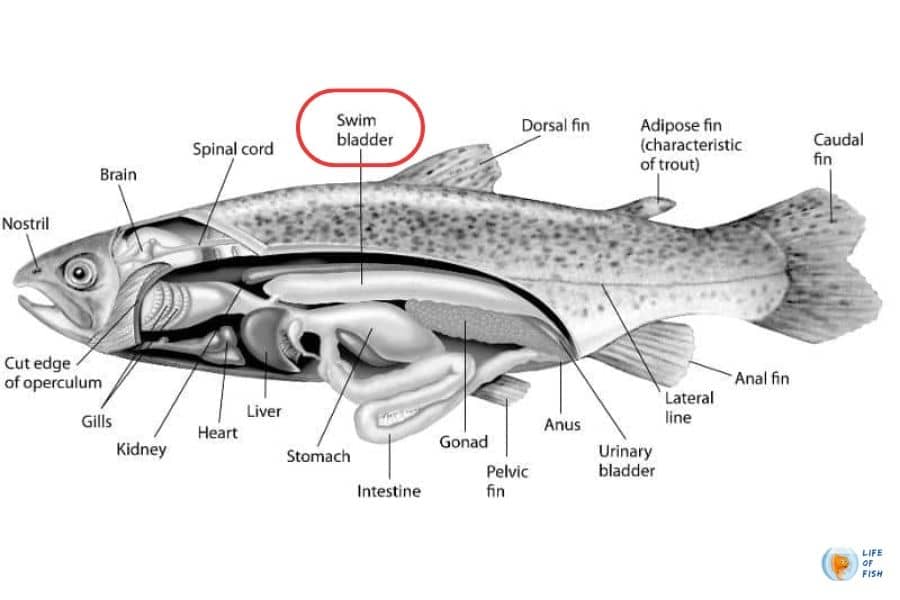Betta swim bladder disease, or SBD, is a common health issue affecting betta fish. This condition can cause distress and discomfort for your beloved pet, as well as potential long-term consequences if left untreated. As an owner of a betta fish, it’s important to understand the causes, symptoms and treatments of this disorder so you can provide the best care possible for your fish.

Swim bladder disorder occurs when there’s an imbalance in water pressure inside and outside the betta fish’s body cavity that affects its ability to move normally underwater. Common signs of SBD include difficulty swimming upright and being stuck at the surface or bottom of the tank. If not addressed quickly, these issues can lead to permanent damage within the internal organs of your pet.
Fortunately, with proper treatment and management techniques, many cases of SBD can be successfully resolved. In this article we’ll explore all aspects related to Betta Swim Bladder Disorder. What it is, how it manifests itself in bettas and how owners can ensure their pets receive quality care throughout this process.
“Ready to take your Betta Fish knowledge to the next level? Our comprehensive guide on Betta Fish Diseases can help you become a fish health expert. Click here to get started!” Betta Fish Diseases
What Is Betta Swim Bladder Disease?
Jump To
The swim bladder is an organ that helps fish control their buoyancy and swim in different depths of water. When the swim bladder is damaged or infected, it can cause betta fish to have difficulty swimming, either floating to the top or sinking to the bottom of the tank.

Betta Swim Bladder Disease Symptoms
The most common symptom of SBD in betta fish is
- Difficulty swimming
- Floating abnormally at an angle or upside down near the surface of the water
- Loss of appetite
- Trouble maintaining balance when trying to stay upright
- Bloating
- Constipation
- Clamped fins
- Lethargy
- Rapid breathing
- Red streaks along the body
- Discoloration around their gills or eyes
If left untreated, SBD can lead to further complications and even death.
It’s important to keep a close eye out for any changes in your betta’s behavior if you suspect they might have SBD.
Betta Swim Bladder Disease Causes
Swim bladder disorder is a common ailment in betta fish, but what are the causes? A variety of factors can contribute to swim bladder disease and should be considered when diagnosing your betta’s condition. Such as,
- Infection: Infections can cause disruption in the normal functioning of the swim bladder in bettas, leading to an inability to control buoyancy. These infections may include bacterial or fungal diseases such as fin rot or dropsy which affect the water balance inside and outside cells. Additionally, parasites like gill flukes can result in inflammation of the swim bladder.
- Nutritional imbalances also play a role by causing malformation of the swim bladder itself. Overfeeding with unhealthy foods high in carbohydrates and low protein content can lead to gas accumulation within the organ and consequently disrupt its functionality. Poor diet choices may also weaken immunity against various other illnesses that can have an impact on swim bladders too. Impaction from consuming indigestible objects like gravel particles is another potential risk factor contributing to this issue.
- Parasites
- Certain plant material ingested by the fish
- Gas bubble disease
- Physical trauma
- Genetic predisposition
This prevents them from controlling their buoyancy correctly, leading to abnormal movements. Such as floating at awkward angles, sinking and difficulty maintaining equilibrium while swimming.
Therefore, it’s important for owners to take into account all possible causes before treating their betta with any medications or home remedies. Incorrect diagnoses could worsen their pet’s health status.
Swim Bladder Disease Treatment
Treating betta swim bladder involves identifying the underlying cause and taking appropriate steps to address it. In some cases, minor dietary changes may be all that’s needed. More severe cases, medications or even surgical procedures will be required. In milder cases, betta swim bladder disorder can often be managed with regular water changes and careful monitoring of food intake.
Adjusting the diet to include more plant matter is also beneficial as it helps support healthy digestion. Additionally, avoiding overfeeding and feeding small amounts throughout the day instead of one large meal can help prevent flares of symptoms due to excessive gas production from undigested proteins or fats in the stomach.
If these measures don’t resolve the issue, then veterinarian will prescibe antibiotics to treat any potential bacterial infections. In rare instances where surgery is necessary, veterinarians are well-equipped to perform corrective operations on affected bettas with excellent success rates.
With proper diagnosis and care, most cases of swim bladder disorder can be managed successfully without further issues occurring down the line.

Prevention Of Swim Bladder Disorder In Bettas
The key to successfully preventing swim bladder disorder in bettas is proactive care. This includes proper feeding habits, tank maintenance and water quality management.
Bettas should be fed an appropriate amount of food that they can consume within a few minutes twice daily. Overfeeding can lead to constipation which may cause the fish to become bloated and develop SBD.
It’s important to clean the tank regularly and replace 25-50% of the water every week with dechlorinated water. This helps maintain good water quality and reduces stress on the fish. Additionally, it’s important to provide plenty of hiding places. Such as plants or rocks for your betta so they feel secure and have some cover from any potential aggressors.
Taking these steps will help reduce the risk of developing SBD in bettas. But there are other factors that could also contribute, such as certain medications or bacteria present in the aquarium environment. If you suspect that something else might be causing swim bladder disorder in your betta then it’s best to contact a veterinarian who can diagnose and treat any underlying issues quickly. Taking proactive measures now will help ensure your pet remains healthy for years to come!
Is Swim Bladder Disease Contagious
Swim bladder disorder in betta fish is like a thorny bush that can spread its branches, causing an ever-growing problem. This contagion can be passed between fish through poor aquarium maintenance or shared water.
If one of your schoolmates was sick with the flu, it would not be wise to share their cup when drinking from the same fountain! Similarly, if you are harboring a betta suffering from swim bladder disease, it’s important to make sure you understand how contagious this condition can be and take steps to prevent its spread.
To reduce the risk of infecting other fish in your tank, keep up with regular tank cleanings and do not allow any new arrivals into the tank until all existing residents have been given a thorough checkup by a veterinarian specializing in aquatic life.
Additionally, isolate any infected fish away from others while they receive treatment and avoid sharing tanks or equipment with other aquarists who may also have ill fish. By taking these precautionary measures and keeping your betta friend healthy in its environment, you can help protect against the further proliferation of swim bladder disease.
Is Swim Bladder Disease Fatal?
Swim bladder disorder in bettas can be fatal if left untreated. When a betta has swim bladder disorder, their organs may become compressed and the fish’s tissues will not receive enough oxygenated blood, leading to eventual death. It is important for any owners of bettas with this condition to seek medical treatment as soon as possible in order to prevent mortality from occurring.
There are also cases where swim bladder disease could potentially cause mortality even with proper medical care. In these instances, the underlying causes of the disorder must be addressed quickly in order to minimize the risk of swim bladder death or mortality in bettas.
Common treatments include dietary changes and medications that help reduce swellings and improve overall health. Without addressing these underlying problems, swim bladder mortalities can occur due to organ damage or fluid imbalance caused by inflammation or infection.
Conclusion
Swim bladder disorder in bettas is a common and treatable condition, though it can be fatal if left untreated. It’s important for owners to recognize the signs of swim bladder disease early and take steps to prevent or address this issue quickly. Swimming is an essential part of life for these beautiful fish, so keeping them healthy should always be a priority.
Think of Swim Bladder Disorder as the bumpy road a betta needs to travel on their way back to health. With patience and proper treatment, it’s possible for your betta to reach better days ahead. Take time to observe your pet every day and watch out for any changes in activity or behavior that could indicate a problem with his swim bladder. You can do so much by providing him with clean water and the right diet, but don’t forget he also needs lots of love and attention.
Bettas are like little warriors who will fight through anything – even swim bladder disorder – when given the chance. As an owner you have the power to give them that chance, so make sure they get all the care they need!
Read Next: Betta Hole In Head: Causes, Symptoms, and Ways to Prevent It
Read Next: Betta Tumors: How to Identify, Treat, and Prevent Them
